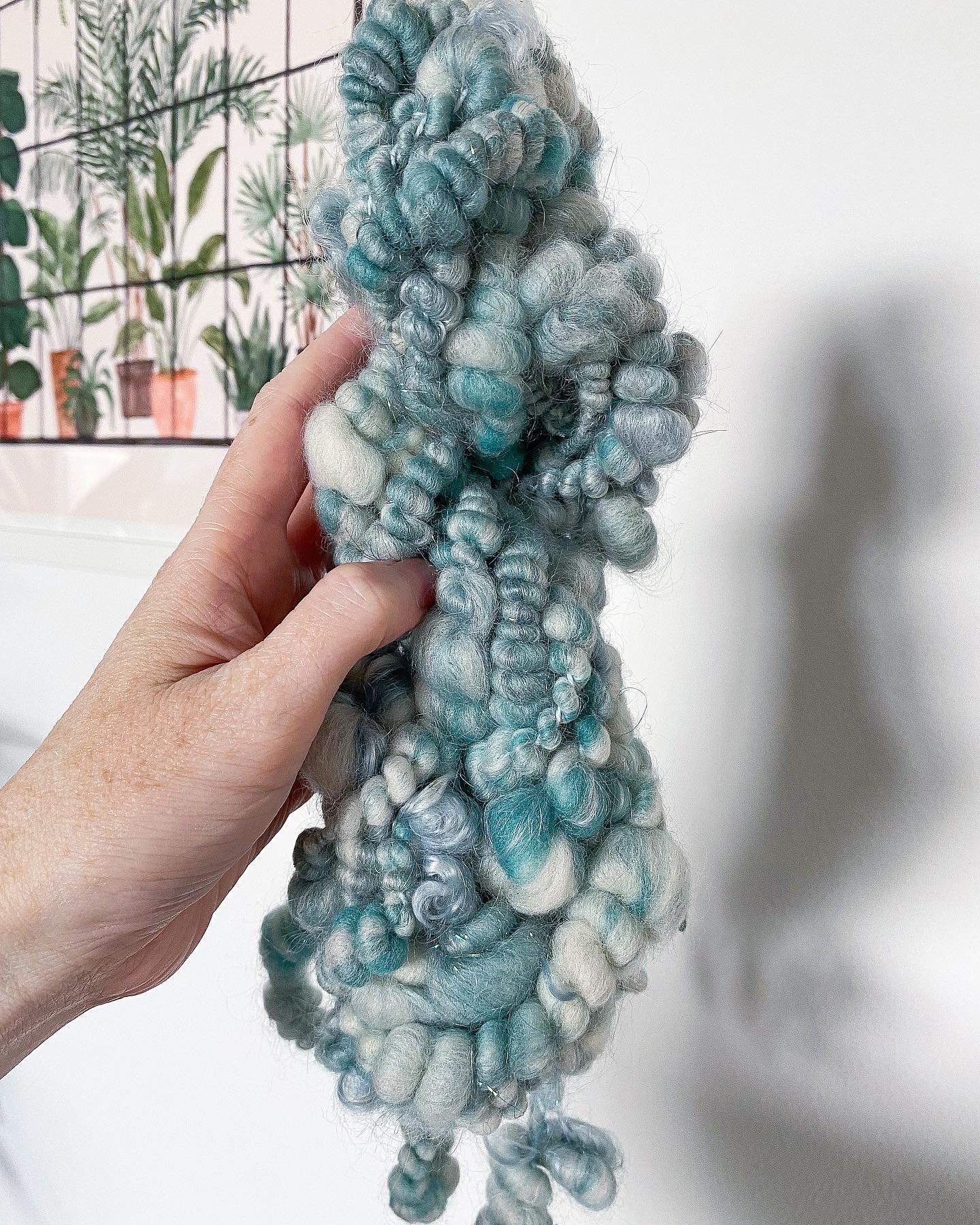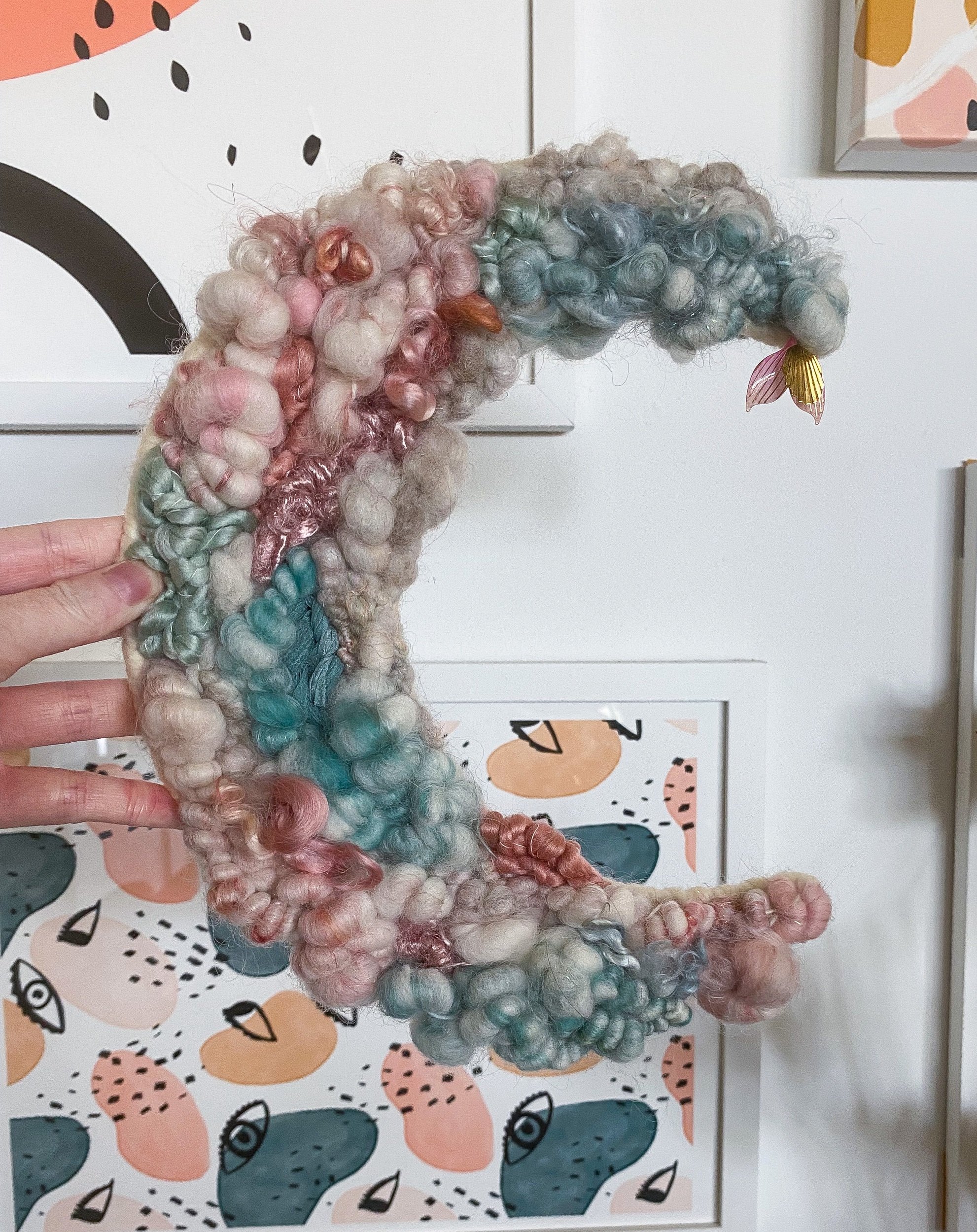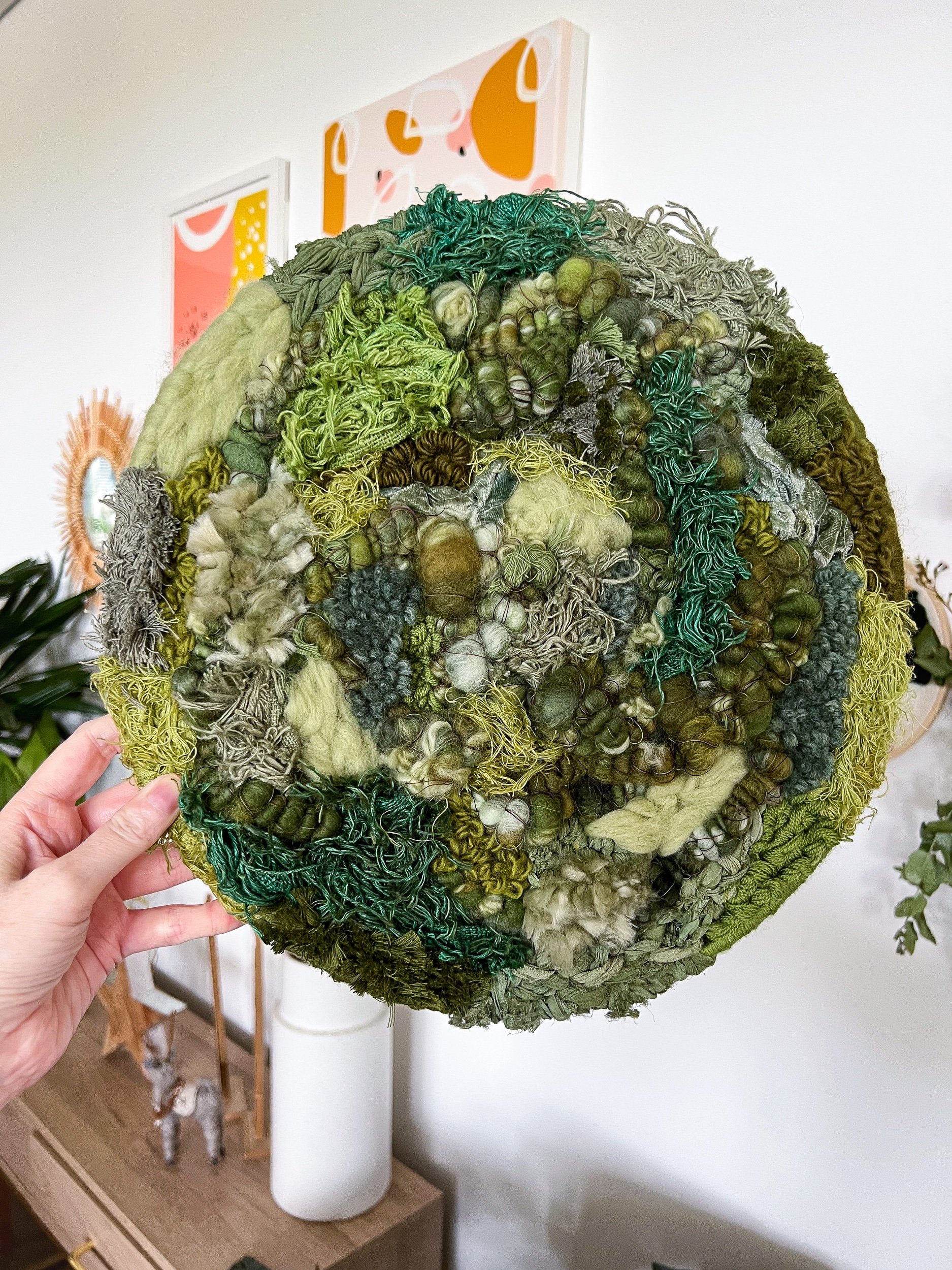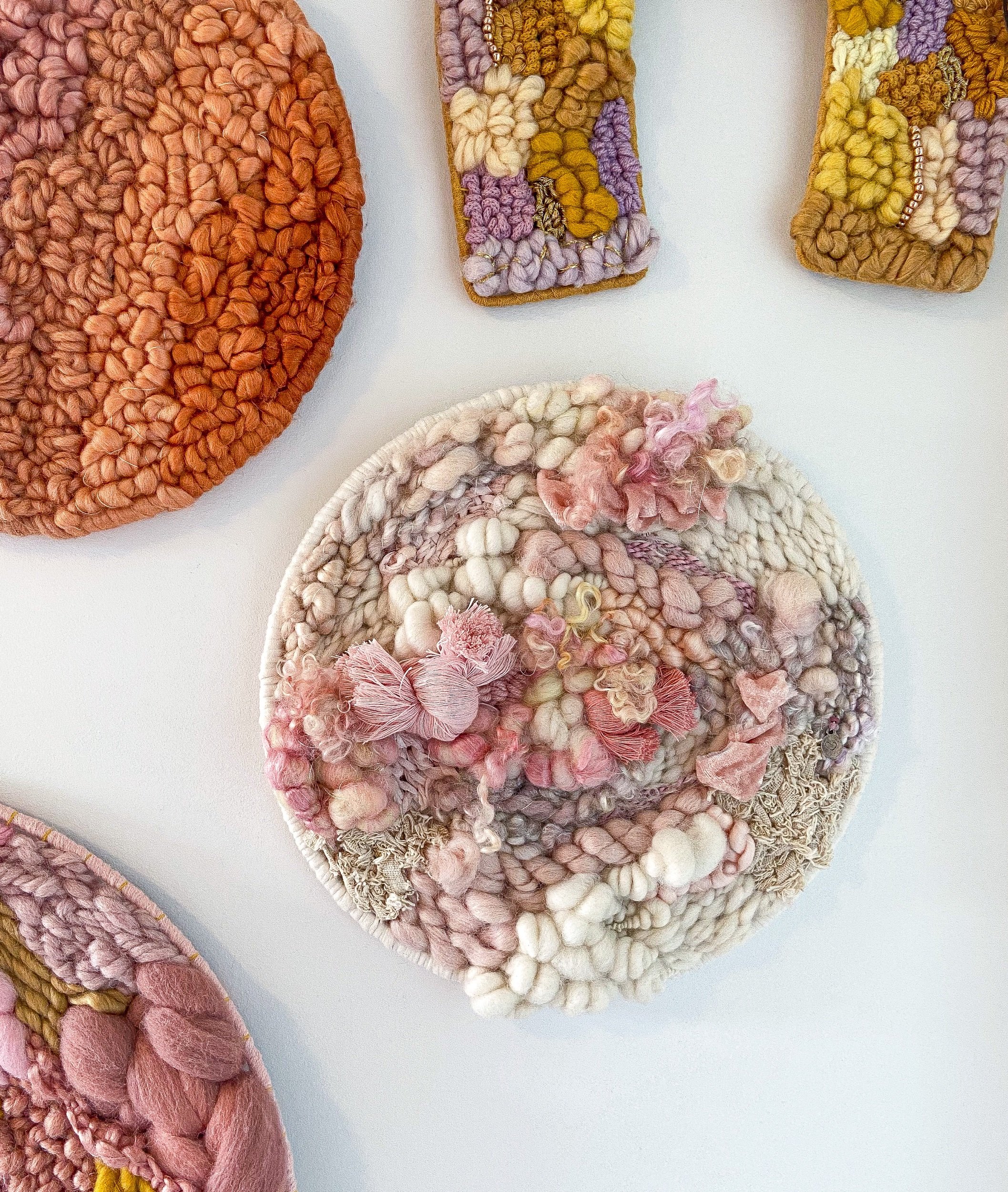The magic of using hand spun art yarn
And a few practical tips on how to weave with it.
In this blog I’m going to talk about some creative applications of hand spun art as well as some practical tips on using it in your fibre art.
Handspun art yarn, it will do magic believe it or not. Oh how I love it! It adds such a special touch to woven pieces. Hand spun art yarn, if you haven’t heard of it before, is yarn that has been made from raw fibres, or partially processed raw fibres.
A little background on the process of hand spinning
Hand spinning yarn is an intricate hobby in itself, so I’ll explain just a little bit of what goes into here as some context. The process has involves taking wool and working it into either a format called roving or tops. So after shearing a sheep, the raw wool is cleaned and then run through a carding machine, which brushes and combs the wool so that the fibres are all roughly in the same direction which creates a product called roving, which is a really light, fluffy and airy fibre that is great to use for spinning yarn or for felting. Alternatively if it’s run through a wool comb, it’s brushed so that all the fibres are in the same direction to produce a product called tops which is then great to use to spin into yarn. Tops and roving are very similar - the key difference is that because roving doesn’t have all of its fibres in one direction, it’s fuzzier than tops and not as soft.
So hand spinners then take either tops or roving, and may hand dye it themselves or buy it pre-dyed, and the process it further into a rolag or batt, sometimes adding extra materials into like sparkly fibre, wool locks, yarn offcuts and more. You can also buy readymade rolags and batts to skip that step. And then they’re ready to spin using a spinning machine (typically). So the “art” element of the term “hand spun art yarn” refers to the style of hand spun yarn where it hasn’t been made into the usual format of a yarn you can easily knit or crochet with. Instead, handspun art yarns are often not as practical as other yarn for use in garments and fabric, in that they aren’t designed for being worn frequently, or washed in a washing machine (or washed at all). They are often less structured and may vary in width quite significantly through each metre of the yarn, going from thick to thin in many different ways - versus traditional yarn used for fabric and garments which is a standard width throughout the yarn. But they are wonderful to use for artistic purposes.
Using art yarn as part of your creative process
One thing I really love is how it makes any piece look so unique and truly one of a kind - you can use it as a core fibre within your work and just let the art yarn sing.
Here’s an example of a rose and teal moon weave I made for a friend, where the hero of the piece was the gorgeous handspun art yarn from Ree at Wildeweave.
Another really cool thing is that many art yarn spinners take custom requests. So if there’s a yarn you’re dreaming of but doesn’t exist, you can have it made! Last year I was asked to create a weave that looked like a moss wall, and I loved the brief instantly and knew I needed something unique made for this. So I briefed my fibre friend Alyssa Wild Spun Fibre who is particularly talented in making green hand spun and hand dyed art yarn, who created the yarn below which formed a large part of the final woven piece (also pictured below).
And lastly, I love using it handspun art yarn as a focal point or a pop of colour in a piece. Handspun art yarn can be art in itself, so even adding a small amount can transform a piece. Here’s an example of a few small sections of art yarn made by Koke Me Designs used for a burst of fluffy colourful beauty in the woven piece on the right.
Some practical notes on using this fibre
It’s very common to feel nervous the first time, the very first time, you snip a handspun yarn. I’ve seen so many weavers mention it. I assure you, it will get easier. Alternatively you may amass an unused collection so large you can drown in it, and tbh, that’s not a bad way to go out!
Unlike other yarns, depending on how it’s made, it can unravel after you snip it. So you need to tie the ends off when you cut off a segment to keep its form
And if it unravels, no worries! Unraveled art yarn is easy to fix. Just grab the core thread (it’s often, in my experience, a thin cotton thread), and wrap the unraveled parts around the core. Then tie it off and you’re back in business baby
Sometimes I prep my art yarn at the start of a weave. I know approximately how much I’m going to use (as I tend to use short lengths for a colour pop, and then use either contrasting or similar tones near it depending on the look I’m going for), and tie off each piece so it’s ready to grab and use when I’m ready to integrate it into the piece.
So if you haven’t used this before, I highly encourage trying it out. Experimentation is a lovely part of the weaving process! I have linked to three of my favourite art yarn spinners but you can find more on Etsy, Instagram or through Google search.






